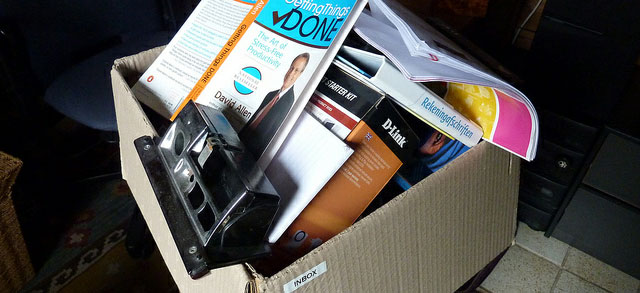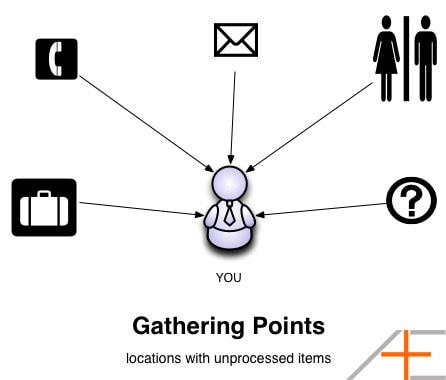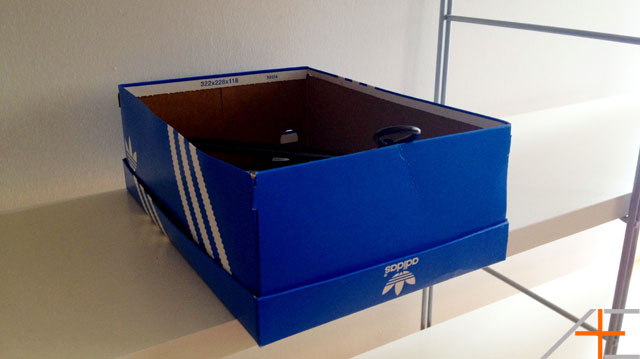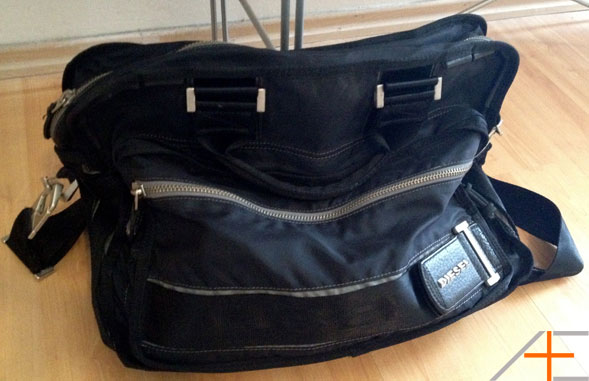
The other day I was watching a series of videos called Time Management Fundamentals by Dave Crenshaw on lynda.com. I’m always interested to learn from other people about time management and there is one concept that I want to share with you that I learned from the videos. One of the ideas Dave talks about is to minimize sources of unprocessed items in order to become more productive. This is what he calls a gathering point.
A gathering point is simply a place of unprocessed items such as your email inbox, paper tray or voicemail. It’s a place where items are stored and you haven’t decided yet what to do with them. You probably know this concept already but it’s nice to have a common name for it, so let’s roll with it.

The overarching idea that I learned from the video is that the fewer gathering points you have, the more effective you will be. Makes sense, right? Instead of checking five email inboxes, if you only had to check two you would be saving yourself a lot more time. Dave goes over several types of gathering points and I want to share some of my own views on them, and later on I’ll talk about some best practices.
Notepad
In the videos Dave also talks about how paper notepads can be a source of unprocessed items. This could be your notes of a meeting or simply ideas you jot down but haven’t processed yet.
The challenge is to make it easy for yourself to see where your action items are located on paper. Sometimes you will have generic notes and action items on the same sheet, and this makes it hard to spot what you should act on. A good way to deal with this is to prefix things you want to process with a symbol, such as a square or asterisk.
Once you have everything noted down, the next step is to tear that piece of paper and put it in your physical inbox. This is the best way to ensure you will act on the information stored on your notepad and it will avoid the hassle of you searching through your notepad.
A couple years ago I would do this a lot but I’ve gone paperless for most of my workflows. I rarely use paper notepads anymore. Once in a while I will grab a sheet of paper, write some things down and then put it in my shoebox. However, nowadays if I need to store ideas and jot down notes, I prefer to store them in digitally in Omnifocus (I will cover this later in the post).
Email Inbox
The email inbox is probably the biggest culprit among all gathering points. It is very rare that people organize and empty their email inboxes simply because people don’t know how to deal with the information. We have talked about how to do this with our simple email guide, so read that on how to process your email inbox.
Dave is a big proponent of unifying your personal and work email inboxes. This makes sense when you think about it. The fewer inboxes you have to check, the fewer switches you have to make, the more time you will save. However, I am really against this idea but I will elaborate on that in abit.
Physical Inbox
A common gathering point is the physical inbox. This is where you store anything that is physical and unprocessed such as papers, snag mail, cords, cables and receipts. A typical physical inbox could be your paper tray or in my case a shoebox. A shoebox? Yes, a shoebox.

Since I tend to live in different places every now and then, I’ve found a shoebox to be a cost effective solution. To get in the habit of storing unprocessed items in your physical inbox, you can simply grab an unused shoebox and start dumping stuff in there for processing later on. Anything around you that is out of place, put it in your physical inbox.
The key to making this work is by ensuring the physical inbox is big enough, is within reach of your workspace and is always in sight.
Portable Inbox
The next type of gathering point is the mobile extension of the physical inbox – your portable inbox. This could be a bag, briefcase or a folder that you always carry around. Or it could simply be a pocket in your pants. In my case this is a dedicated pocket in my messenger bag.

Use your portable inbox to store business cards, receipts, paper notes, and other things you might have to cary around – anything that you want to process later while you are on the go. Once you arrive at your office or your home, that’s when you dump all your items you collected into your physical inbox.
Voicemail
Voicemails are still prevalent in today’s offices but in my opinion it’s a very dated piece of technology. I’ve eliminated voicemail as a gathering point in my life. When people get my voicemail, I tell them to text or email me in order for me to get back to them. This is a huge time saver and I would recommend you try to do the same.
However, I understand this does not work for everyone, and some of you are forced to use voicemails (especially for those reading that work in a strict office environment). To get the most out of this, here are a couple tips.
First, use call forwarding. If someone tries to call you at work but you’re not there, have the call forwarded to your cellphone. Or vice versa. This way only one voicemail will be used instead of two. If you like to unify work and personal life, this is a great solution.
Second, if you have the luxury of a personal assistant or secretary, have him/her go through your (work) voicemail. Delegating this task will save you a lot of time.
Third, if possible and allowed, use third-party services that can record calls and generate transcripts of voicemails. Such services such as Google Voice and YouMail can make processing voicemails a lot more efficient. Before I quit voicemail, I was using Google Voice with great success. Definitely try it out if this solution sounds enticing.
Personal or Virtual Assistant
A personal or virtual assistant is another gathering point and the one that requires the most skills to manage. It’s good practice to talk to your assistant on a regular basis to ensure everything is on track. Be accessible to that person and make sure your assistant is accessible as well. Obviously this person can communicate with you through different mediums (phone, texts, email, etc) but it’s important to have face-to-face meetings (video calls count too) so you two can go over a list of things that need to be discussed.
Social Media
Who doesn’t have a Facebook account nowadays? Or a twitter account? Like it (no pun intended) or not, these social media outlets are another form of gathering points. When you are active on social media, you’re constantly in contact with other people that will bombard you information that you (might) need to process.
If you aren’t really active on social media, then you don’t need to review it as often. However, if you want to build up your social presence than you need to regularly review your social media outlets. If you are one of them, the challenge is to not distract yourself from constantly checking your Twitter feed and Facebook account. To help you in this department, Aaron wrote a post over at New Media Rockstars to help you social media rockstars to be more effective.
Text Messages
I have a confession to make: I text a lot. This also includes me using Whatsapp and iMessage on top of regular SMS. For most people text messages are a another gathering point. For some it’s less, for others it’s more. Since I’m on my phone a lot I pretty much process texts every hour – that doesn’t mean you have to do that too but the reality is you probably do.

What exactly do I mostly do? Aaron and I message each other regularly about Asian Efficiency and other cool stuff. We also have our international mastermind setup via Whatsapp that include other people. Plus I text my virtual assistant a lot for check ups and to answer any questions he might have.
Task Manager Inbox
The last gathering point I want to talk about is your task manager inbox. Or your unprocessed to do list. I prefer to store action items, notes and thoughts in Omnifocus. Eddie Smith wrote a great post on how he does it and I’m on the same boat. Store everything in Omnifocus, and then put the information in the right places as you process your inbox.
Whether you use Omnifocus or any other task manager – the principle stays the same. Store everything digital in your inbox, process and empty it on a regular basis, and put the information the right place where it belongs.
Review, Review, and Review
Okay so I’ve listed a bunch of gathering points but that doesn’t mean right away that you’ll be a champ at managing your time. The key to making this all work is to regularly review your inboxes. I can’t stress this enough: review your inboxes on a regular basis.
This is absolutely the key to prevent yourself from missing out on commitments and deadlines. Don’t just dump-and-forget, but dump-and-I-will-process-later.
The review cycles are different for each gathering point. Some require weekly reviews, others require every couple of hours. This is really a personal preference but here are my review cycles:
- Physical Inbox – every Sunday at 4pm.
- Portable Inbox – dump every day.
- Email Inbox – at least twice a day (10am and 5pm).
- Text Messages – every hour.
- Social Media – every hour.
- Task Manager Inbox – every day at 5.30pm.
When you do your reviews is up to you. I like to pick Sundays, Aaron likes Fridays. Pick a day and time, and stick to it. The more specific you are with your time and day, the more likely you will stick to the routine. Make a repeating calendar note if you have to. Just make sure to do your reviews at least once a week to prevent an overflowing inbox that you will be afraid to deal with. The last thing you want to have is anxiety when you’re facing a long list.
Unification versus Separate Contexts
Earlier I mentioned how Dave Crenshaw advices people to unify their email inboxes to be more effective. I think this will work for some people, but I’m really against this approach. Separation of work and personal is something that is very important to me. When I’m in work-mode, the last thing I want to deal with is personal stuff. And vice versa. This separation of work-life context can be difficult at times but it’s important to be able to disengage from each context. As we have praised The Power of Full Engagement (review) many times on this blog, and one of the key components to peak performance is to be able to renew your energy and focus by disengaging with what you are doing.
When you blend work and personal, you cannot disengage from both contexts. They are both there all the time. You can’t disengage from work as you’re reading subject lines of work emails when you are checking your personal email. What will most likely happen is that you will be reading a couple work emails and before you know it you might end up working when you shouldn’t have. Downtime is important.
I understand where Dave is coming from. The less gathering points you have, the more effective you will be. The benefit is that you can batch process emails this way. And I think this approach does work for some people – just not for me.
Next Actions
Make an inventory of all gathering points you have and then take action on simplifying your list. Can you get rid of any?
There is no magical number on how many gathering points you should have. It’s different for each individual. Just realize that the less you have, the more effective you will be.
For any questions and comments, let us know in the comments below!
Photos by 300td.org and Jhaymesisviphotography.

Hi Thanh, interesting article, grounded in common sense.
Shame that services like Google Voice and YouMail are US-only. Sound like they would be a real help (although voice recognition can be a challenge for those not speaking a fairly standard, accentless English).
One small gathering point consolidation that I like (everyday item, dirt cheap): notebooks with a storage pocket at the back for everything you collect “on the road”, with a strip of elastic to keep the book shut. And because the notebook lives in my laptop bag, it serves as what you called a mobile inbox. So taxi receipts, hotel bills etc all live there until I get back home.
I keep the quantity of notes in the book in check simply by drawing a square at the top of the page, labelled “PC?” meaning “Page Complete?”. Once everything on the page is done (or captured electronically), I tick the box and then I don’t need to look at it again. So it isn’t stressful to flip through pages of bad handwriting.
I guess I should go paperless one day, but taking notes in meetings looks an awful lot like playing Angry Birds… ;-)
These are really great tips Paul! I love that idea of scribbling PC on top of your pages. Really smart.
I think yours is a good example how paper is still really useful. Even though we have all this technology to go paperless, some people prefer to use paper. Combining paper and digital solutions is the way to go.